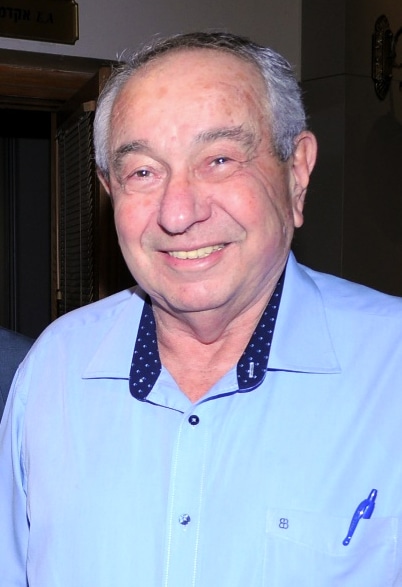Home » The address of the Chairman of the Organization, Aaron Esteron

The Association for the Commemoration of the Jews of Hrubieszow who Perished in the Holocaust was founded in the early 1950’s by Holocaust survivors from Hrubieszow who arrived in Israel in the mid-1940s, toward the end of World War II. Inspired by the Yizkor books (memorial books document Jewish communities destroyed in the Holocaust), one of their first endeavors was compiling and editing “Pinkas Hrubieszow” (“The Hrubieszow Yizkor Book”), in Yiddish and in Hebrew. In Pinkas Hrubieszow, survivors related their experiences in the Holocaust, told their town’s story, and described the Jewish community’s institutions, the Jewish way of life and the Jews relationship with non-Jewish residents. Looking back, Pinkas Hrubieszow was the survivors’ “wall of tears” – where nostalgia converged with sorrow, as they yearned for a way of life that was abruptly halted and destroyed. A way of life that disappeared. They shared their experiences with those who had survived and been saved from the inferno. Later, Pinkas Hrubieszow (like other communities Yizkor books) also became an important document for researchers interested in the community memories harbored by the first wave of immigrants.
The association founders’ second goal was to construct a memorial in Israel for Hrubieszow community members who were murdered. A monument was erected in Tel Aviv’s Nachalat Yitzhak Cemetery in which the ashes of the Jews who were murdered in Hrubieszow’s Jewish cemetery were buried. A scroll with the names of those who perished was also buried near the monument. In 1996, a monument was built in Hrubieszow’s Jewish cemetery, on the remnants of the old Jewish cemetery, where the last Nazi Aktion occurred – an operation in which the city’s last remaining group of Jews were executed. The monument in both Hrubieszow and Tel-Aviv were designed by Avraham Silberstein, who was born in Hrubieszow , and whose family was murdered by the Germans. The monument is made of fragments of tombstones that were removed from the Jewish cemetery after the war by local residents and used to pave the sidewalks. Silberstein and Shalom Omri, a Holocaust survivor and Hrubieszow native, traveled to Poland and oversaw the construction of the monument. Since its founding, the association has been supporting the preservation and maintenance of the monument and its surroundings.
One important step taken by the association founders’ generation was forging a connection with Hankin School, and later, with Kiryat Sharet High School (both in Holon), in order to create a dialogue with the younger generation, centered on their personal story and the story of their town. Later, these schools became a pedagogical model for other schools throughout the country for deepening students’ understanding of the Holocaust and creating an intergenerational dialogue between survivors and students. Michael Drori (Finger), the principal of Hankin School, encouraged the teaching staff and students in the higher grades to forge a long-standing relationship with the municipality of Hrubieszow and the city’s school. For years, the association has supported high school student trips to Poland, which inlcuded visits to extermination sites, and it still does so. During these trips, the students also visited Hrubieszow, met with high school students from the city and held memorial rallies near the monument. Once a year the association organizes a memorial ceremony for the Hrubieszow victims with the participation of the members of the association and their families, alongside Kiryat Sharet high school students and the teaching staff. Over the years, this ceremony has become a meeting place for second and third generation Hrubieszow families, the school’s administration, and many guests.
The association’s management is fully aware that over time, the existing oral and written records concerning Hrubieszów, before and during the Second World War, may disappear, so it took it upon itself to create a website seeking to showcase the diversity of the Hrubieszow community and the social, cultural and communal life that formed within it over the centuries of its existence. We hope that former residents of Hrubieszow as well as students and researchers in Israel and abroad find the website intriguing, and that it will also serve as a “meeting place” for former residents of Hrubieszów and an important source of information for students and researchers of the Holocaust.
Best regards
Aaron Esteron, chair of the association’s board of directors
Sincerely yours,
Aaron Esteron